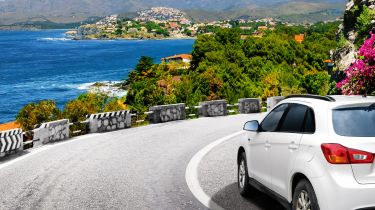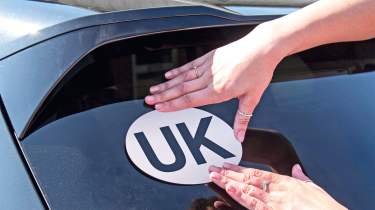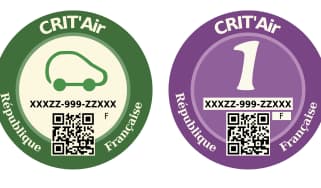Driving abroad: your holiday car guide
Taking your car outside the UK can be fun, family friendly and cost-effective, and our tips will help you stay safe and legal on holiday

Many of us choose to drive whilst on holiday, but whether you’re using your own or a hire car, driving in a foreign country can be a nerve-wracking experience.
However, with a little bit of preparation, you can be sure you remain on the right side of the road… and the law.
Generally speaking, you’ll need to ensure that you have sufficient insurance, as well as the correct documentation and equipment to drive abroad.
If you’re taking your own car, you'll need to make sure it’s legal and safe to make the journey, while choosing to take a hire car may need additional planning and research to ensure you don’t run into trouble or any unnecessary expenses.
Our guide to driving abroad has tips and advice on everything we can think of to give you a head start on your driving holiday.
While this is more of a general overview of driving abroad, we have specific pages dedicated to those driving in France, as well as those planning to drive in Spain, Italy or even the USA.
Driving abroad: the basics
Driving abroad isn’t simply a matter of getting off the ferry/train onto the other side of the road; as with many other things, there are certain habits and rules (written and unwritten) to bear in mind.
It’s worth researching beforehand the signage and speed limits of the any country you’re planning to visit so you’re not caught out. It’s also a legal requirement that, when driving in the EU, you affix a ‘UK’ sticker to the rear of your car so locals can identify you as a tourist and, hopefully, give you a little extra breathing space.
On that point, we recommend that you allow plenty of time; being in a rush means you’re more likely to make mistakes and this could spell disaster when you’re in an environment you’re not familiar with.
Finally, make sure you carry the correct equipment with you; driving in France, for example, you have to carry with you at all times a warning triangle and a hi-visibility jacket among other things. Fitting some headlamp reflectors (or adjusting your headlights electronically) can also help prevent blinding other road users.
How do you drive on the right-hand side of the road?
If you’ve never driven on the other side of the road, it can be daunting. But if you follow the road markings, signs and other traffic, it will soon become second nature. You are most likely to be caught out on rural roads where there are no lines on the road – especially at night and if you are driving a RHD car.
Below are our top five tips for driving on the right (wrong) side of the road...
- The centre line: Ensure you’re staying in lane by lining up the central road marking with the left-hand corner of your car’s windscreen.
- Use your sat-nav: The navigation system will tell you where to turn and can be especially useful as a reminder on roundabouts. It will also help you to steer through one-way systems, where unfamiliar road signs can be confusing, and give you a heads-up on changes to the speed limit.
- Dual carriageways: Stick to the right-hand lane because this is the normal driving lane unless you are overtaking. It’s important to note the blind spot will be over your left shoulder, too.
- Turning left: You’ll be cutting across the traffic in this manoeuvre, so give way to oncoming vehicles – just like making a right turn in the UK. On fast-moving roads you may need to pull over to the right before swinging round to cross the road at a right angle. This prevents you from causing a blockage while waiting to turn. Look out for the signs.
- Roundabouts: You’ll need to give way to the left rather than the right at roundabouts, and remember to signal right when exiting, too.
Do I need an International Driving Permit?
British drivers with a full UK photocard driving licence won’t need an International Driving Permit to drive in the EU.
However, in 140 other countries, including the USA, Turkey and Japan, one is either a legal requirement or recommended.
Thankfully, the GOV.UK website has an extensive list of each country’s requirements, so there’s no need to search around. The permit costs £5.50 and you can apply for one from larger Post Office branches (or anywhere with a PayPoint).
Do I need European breakdown cover?
There is no legal requirement for European breakdown cover, but it’s a sensible safety net in case the worst happens.

Before you pay for cover, check your existing car insurance and breakdown policies to find out whether they include any European cover – many do and you’ll be wasting money paying for another policy.
If you have a newer car, or recently bought it from a dealer, cover in Europe might be included as part of the warranty – although the benefits may be limited, so we recommend you check before you travel.
If you do need to fork out for breakdown cover, single-trip cover is cheaper, but if you expect to drive abroad several times a year, annual cover may be better value.
Do I need to have a car insurance ‘green card’?
UK residents driving in the EU do not need to carry a special document proving they have insurance for driving abroad. These documents are known as an insurance ‘green card’, although they don't have to be green – or even a card! A green card will, however, be needed if you intend to drive your car in many countries outside the EU.
To apply for one, you simply need to telephone your insurer and ask; it will usually be e-mailed across with no charge or only a small admin fee. Check that the cover is the same as you have in the UK rather than just being the legal minimum, and tell your insurer exactly where you’re going. That will ensure the green card is valid in every country you’re travelling through.
If you have car insurance in the UK, you will automatically have third party cover in the EU. However, most people driving abroad will want to get fully comprehensive insurance for travelling in Europe, and you will need to check your insurance policy to see exactly what is covered. It may be included or you may have to make special arrangements with your insurer. In any case, it's important to carry details of your insurance policy with you when driving your car abroad.
How can I save money on a hire car?
For a car enthusiast, renting a vehicle on holiday can be great fun. You’re never quite sure what you’ll get and it’s a chance to drive something different. It’s also less stressful to let the hire company take care of all the legal necessities, such as the high-visibility jackets, winter tyres and warning triangles, that you may need when driving abroad. But you still need to be on your guard to make sure your hire car doesn’t empty your wallet.
First, make sure you have the right licence to drive in the country you are visiting; as mentioned above, you may need an International Driving Permit if it is outside Europe. You will also need to check that you are within the age range specified by the hire company; there will be upper and lower limits, but these can sometimes be stretched for an extra fee.
When looking for deals online, check out the insurance restrictions. Many companies offer basic cover but suggest you upgrade to a more comprehensive package. It’s usually cheaper to arrange this with a third-party company before you leave.
Also take note of the situation with fuel. Some firms supply the car with a full tank and insist you return it full. Check where the nearest filling station is to the airport and leave time to top up on your return, or you will be charged a steep fee.
Finally, make a note of any existing damage to the car before you leave the company lot, preferably with photos, and try to get the details acknowledged by a member of staff.
Driving abroad: everything you need to know
- Holiday car hire: scams, tips and how to get a great deal
- Driving on the right: we take our left-hand drive test
- European breakdown cover: top tips
- International driving permit: do I need one?
- What is a car insurance green card?
- Driving in France
- Driving in Spain
- Driving in Italy
- Driving in the USA
- Driving in Europe after Brexit
What are your top tips for driving abroad? Let us know in the comments section below...
Find a car with the experts









